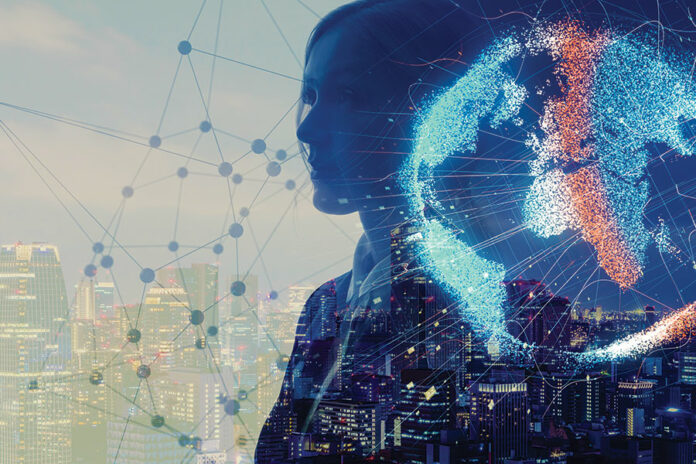From Cybersecurity to Physical Actions: Reinforcing Company Safety And Security in a Changing Globe
By incorporating the toughness of both cybersecurity and physical security, companies can develop a comprehensive defense technique that attends to the varied variety of dangers they deal with. In this discussion, we will explore the changing hazard landscape, the requirement to incorporate cybersecurity and physical safety, the implementation of multi-factor verification procedures, the value of worker understanding and training, and the adaptation of safety and security measures for remote workforces. By taking a look at these crucial areas, we will gain beneficial understandings into how companies can enhance their business security in an ever-changing globe.
Comprehending the Changing Threat Landscape
The evolving nature of the contemporary world demands a thorough understanding of the transforming danger landscape for reliable company safety. In today's interconnected and digital age, risks to company safety have come to be much more intricate and advanced. As technology breakthroughs and services become significantly reliant on digital facilities, the potential for cyberattacks, data violations, and other safety breaches has considerably raised. It is vital for organizations to stay educated and adapt their safety gauges to deal with these advancing risks.
One key element of comprehending the transforming hazard landscape is recognizing the different kinds of dangers that companies face. Cybercriminals are regularly creating new methods to make use of susceptabilities in computer system systems and networks. These threats can range from malware and ransomware attacks to phishing scams and social engineering tactics. Additionally, physical risks such as theft, vandalism, and corporate espionage remain prevalent concerns for businesses.
Tracking and evaluating the risk landscape is important in order to identify prospective risks and vulnerabilities. This involves remaining updated on the newest cybersecurity trends, analyzing threat intelligence reports, and conducting normal danger assessments. By understanding the transforming risk landscape, organizations can proactively apply proper safety steps to mitigate threats and safeguard their possessions, credibility, and stakeholders.
Integrating Cybersecurity and Physical Security
Incorporating cybersecurity and physical safety and security is essential for comprehensive company security in today's interconnected and digital landscape. As organizations progressively depend on modern technology and interconnected systems, the limits in between physical and cyber dangers are ending up being blurred. To efficiently protect against these risks, an all natural strategy that incorporates both cybersecurity and physical safety and security actions is necessary.
Cybersecurity concentrates on protecting digital assets, such as information, networks, and systems, from unauthorized gain access to, disturbance, and theft. Physical safety, on the various other hand, encompasses procedures to safeguard physical possessions, people, and centers from threats and susceptabilities. By incorporating these 2 domains, organizations can deal with susceptabilities and hazards from both electronic and physical angles, thus improving their general protection posture.
The combination of these two self-controls enables for an extra comprehensive understanding of security risks and enables a unified reaction to occurrences. For instance, physical gain access to controls can be enhanced by incorporating them with cybersecurity protocols, such as two-factor verification or biometric recognition. Cybersecurity procedures can be matched by physical safety steps, such as surveillance cameras, alarm systems, and safe and secure accessibility points.

Applying Multi-Factor Authentication Measures
As companies increasingly focus on thorough safety actions, one efficient method is the application of multi-factor authentication procedures. Multi-factor authentication (MFA) is a protection technique that requires customers to offer several forms of identification to access a system or application. This approach adds an added layer of security by incorporating something the user understands, such as a password, with something they have, like a safety or a fingerprint token.
By implementing MFA, organizations can considerably enhance their safety stance - corporate security. Traditional password-based authentication has its constraints, as passwords can be easily compromised or failed to remember. MFA alleviates these risks by including an extra verification factor, making it extra difficult for unapproved individuals to get accessibility to delicate info
There are numerous sorts of multi-factor authentication methods available, including biometric authentication, SMS-based verification codes, and hardware symbols. Organizations require to examine their specific needs and select one of the most proper MFA option for their requirements.
Nonetheless, the implementation of MFA should be thoroughly intended and carried out. It is vital to strike a balance between safety and security and functionality to avoid individual stress and resistance. Organizations should also consider prospective compatibility concerns and supply appropriate training and assistance to ensure a smooth transition.
Enhancing Employee Understanding and Training
To strengthen corporate protection, companies have to focus on improving employee recognition and training. In today's rapidly evolving danger landscape, workers play a crucial role in safeguarding an organization's sensitive details and possessions. Lots of protection violations occur due to human error or absence of understanding. For that reason, companies require to purchase thorough training programs to inform their workers regarding potential dangers and the best practices for alleviating them.
Efficient employee recognition and training programs must cover a broad array of topics, consisting of information defense, phishing attacks, social design, password hygiene, and physical safety and security steps. These programs ought to be tailored to the specific needs and obligations of various worker duties within the organization. Normal training workshops, sessions, and simulations can aid staff members develop the needed abilities and expertise to react and determine to security dangers successfully.
Moreover, organizations need to urge a society of protection understanding and supply ongoing updates and suggestions to keep workers notified about the current threats and mitigation strategies. This can be done through inner communication networks, such as newsletters, intranet websites, and email campaigns. By cultivating a security-conscious workforce, companies can substantially reduce the chance of safety incidents and secure their valuable possessions from unapproved access or concession.

Adapting Safety And Security Procedures for Remote Labor Force
Adjusting corporate safety and security steps to fit a remote labor force is crucial in ensuring the protection of sensitive info and possessions (corporate security). With the boosting pattern of remote job, companies have to execute appropriate safety steps to mitigate the threats linked with this brand-new means of functioning
One crucial facet of adapting protection steps for remote work is developing protected communication channels. Encrypted messaging platforms and digital exclusive networks (VPNs) can aid secure sensitive info and prevent unapproved gain access to. In addition, organizations should implement making use of solid passwords and multi-factor verification to improve the security of remote access.
One more important consideration is the execution of protected remote gain access to options. This entails providing staff members with safe access to corporate sources and information through virtual desktop infrastructure (VDI), remote desktop computer procedures (RDP), or cloud-based services. These technologies ensure that delicate info continues to be secured while enabling staff members to do their roles properly.

Last but not least, detailed protection recognition training is essential for remote workers. Educating sessions should cover finest methods for firmly accessing and handling sensitive info, determining and reporting phishing efforts, and maintaining the overall cybersecurity hygiene.
Final Thought
In verdict, as the danger landscape continues to evolve, it is critical for companies to reinforce their safety gauges both in the cyber and physical domains. Integrating cybersecurity and physical security, applying multi-factor verification steps, and boosting employee awareness and view website training are important steps towards attaining durable company safety and security.
In this conversation, we will certainly check out the altering risk landscape, the demand to incorporate cybersecurity and physical safety, the implementation of multi-factor authentication measures, the relevance of employee understanding and training, and the adjustment of safety and security procedures for remote workforces. Cybersecurity steps can be complemented by physical safety actions, such as security electronic cameras, alarms, and safe access factors.
As organizations increasingly prioritize thorough security steps, one efficient strategy is the implementation of multi-factor authentication procedures.In conclusion, as the risk landscape continues to evolve, it is critical for companies to strengthen their safety and security measures both in the cyber and physical domains. Integrating cybersecurity and physical safety, applying multi-factor verification measures, and improving worker understanding and read training are important steps in the direction of attaining durable business security.